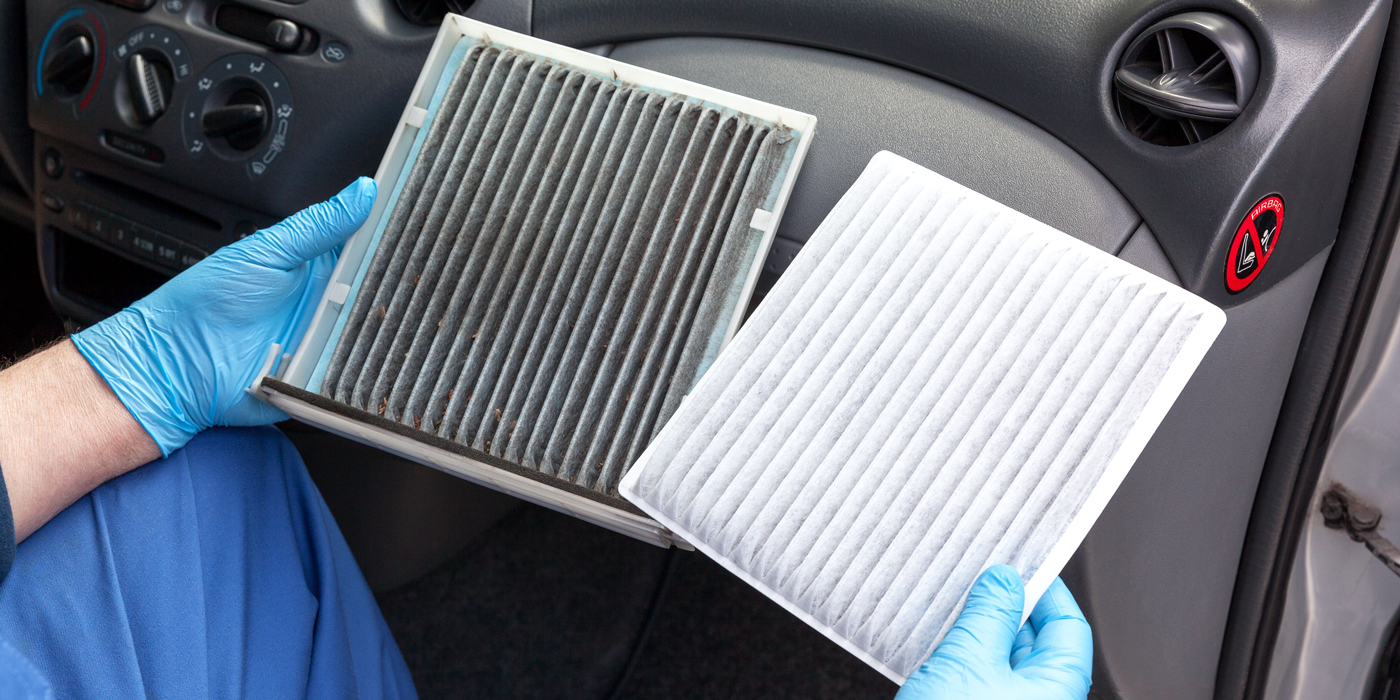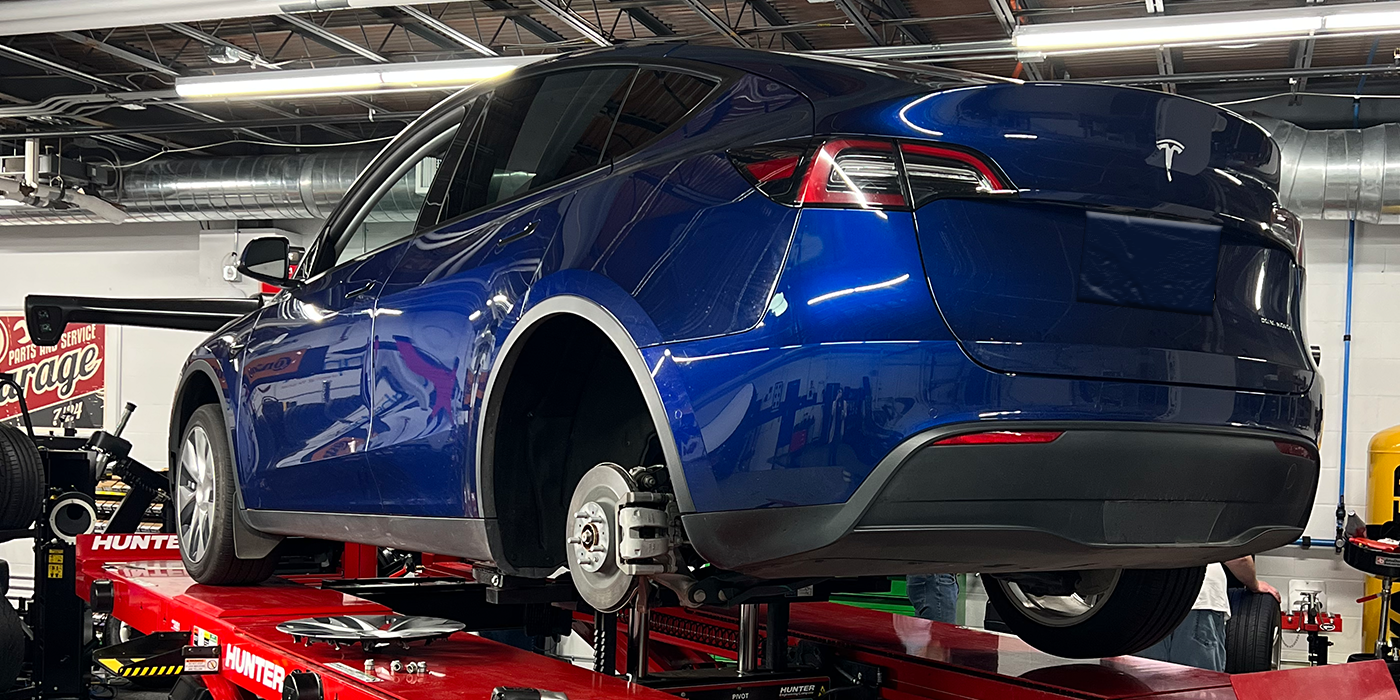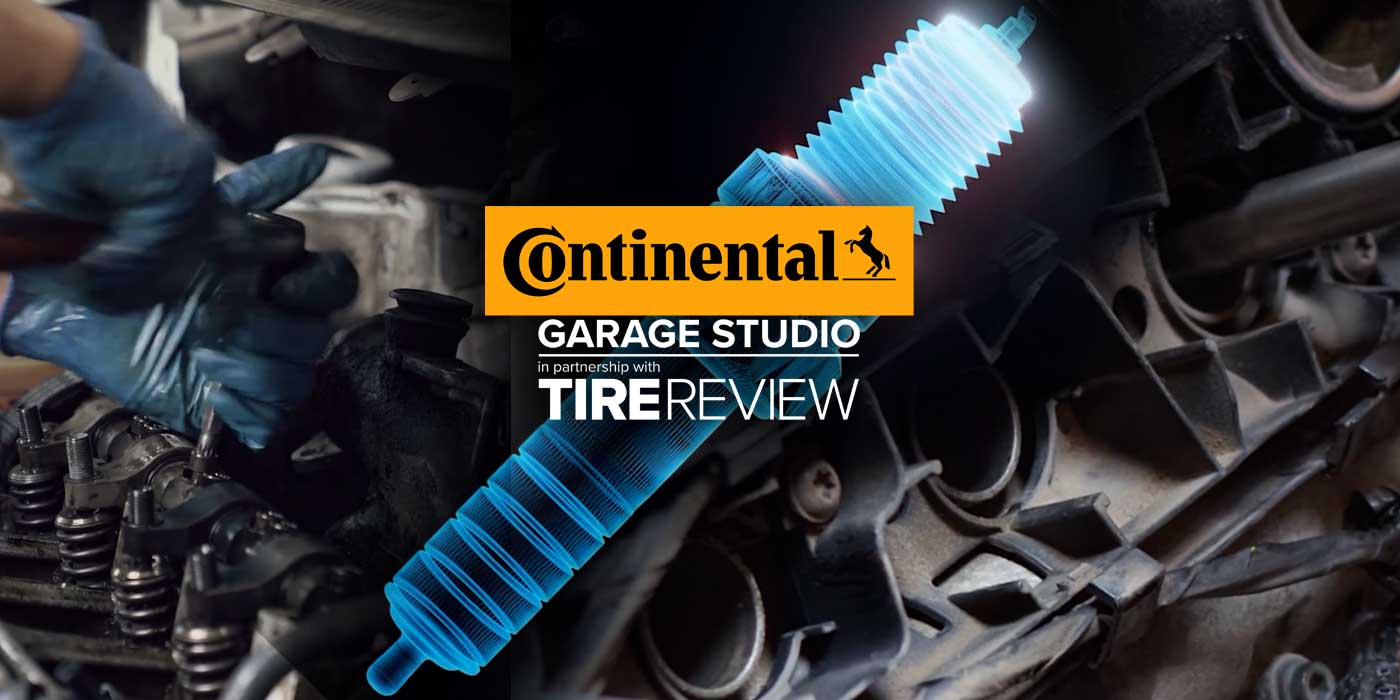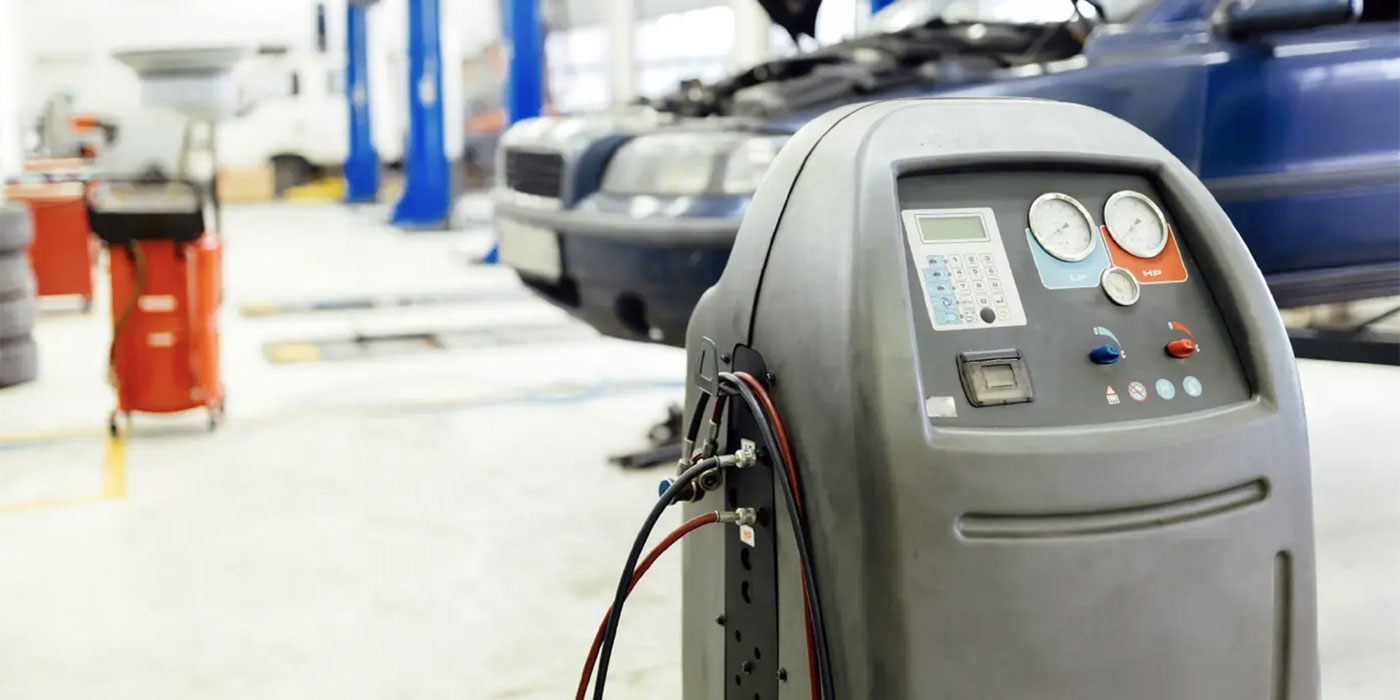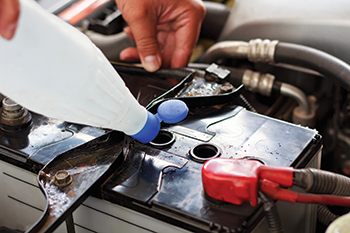 Do not turn the charger on until both leads have been connected to the battery. Connect positive to positive and negative to negative. Do not reverse the connections as doing so may damage the charger and battery.
Do not turn the charger on until both leads have been connected to the battery. Connect positive to positive and negative to negative. Do not reverse the connections as doing so may damage the charger and battery.- Slow-charging at 6 amps or less is best because it develops less heat inside the battery (which can damage cells and increase evaporation). A slow charging rate will also break up the sulfation on the battery plates more efficiently to bring the battery back up to full charge.
- “Smart chargers” also work well because they automatically adjust the charge rate to the battery’s state of charge. Most start out with a charging rate of 15 amps or higher, then taper off the charging rate as the battery charge comes up.
- Fast-charging a battery saves time but risks overheating and damaging the battery. If using a fast-charger, don’t use the highest setting. Use the “boost” setting only when cranking the engine.
- Refer to the battery’s reserve capacity rating to determine charging times and rates. The charging rate (in amps) multiplied by the number of charging time hours should equal the reserve capacity of the battery. (Example: a dead battery with an reserve capacity rating of 72 will require charging at 6 amps for 12 hours.)


